#Ghost in the Shell Movie Controversy
Explore tagged Tumblr posts
Text
Race, Live-Action Casting, and Ninjago
I'll start by saying something everyone can agree on.
No Chris Pratt.
Now that's out of the way I want to state my purpose for this rant. It's to spark discussion. I want to hear other people's ideas and perspectives. I'm one Asian American out of literal billions. I know after typing everything out I'll feel bad, but this feels like a discussion the fandom needs to address. Every perspective is worth considering and thinking through.12
I'm not worried about the casting. Warner Bros. is a big studio that doesn't want any negative press. At least, Kai and Nya are going to be Asian. I'm worried about the other Ninja, mainly Lloyd. But I think the studio doesn't want to be cancelled, so that's not my number one worry. My number one worry is Garmadon. If Garmadon is in the movie, will his skin be literally black? his can be sidestepped if Garmadon isn't included period. But the Hagemans love their emo dad. Still, I don't want blackface Garmadon.
My theory is the casting will have a similar model to what Avatar did in it's live action. There were white voice actors, now they're played by a diverse cast. Kiawentiio is amazing, but not as tan as Katara was in the animated series. (That's a discussion within itself) There was a controversy with Ian Ousley. I'm not going to get into those topics, but they did happen.
However, the worry for many comes from the fact Ninjago is more racially ambiguous than Avatar: The Last Airbender. Almost all the characters-with exceptions being the Water Tribes and Sun Warriors-are Asian. Avatar: The Last Airbender has characters with a variety of skin tones and facial features. Ninjago has almost all of it's characters with yellow skin. Which is typical for LEGO, but feels iffy in an Asian inspired world. The fact everyone has yellow skin lends to an almost race blind world. However, names come from countries. Completely human characters have blond/ginger hair. Lloyd and Master Wu have blond hair. Master Wu is especially weird because he has the aesthetic of the Hollywood wise old Asian martial arts teacher there to help the protagonist. But he's blond.
In a cartoon I can suspend my disbelief. In the show I can't see facial features. Everyone in Ninjago has the same eyes, unless if you're a robot, one of the very few women, or Lloyd. I can live with this in an animated show from the 2010s.
In live action films, there are close-up shots. People will stand next to each other. I know what real life people look like when I'll see the movie. This shouldn't matter to me. I shouldn't care so much, but the history of whitewashing roles in media is too vast. We interpret the world through race.
White is the default in the US. Examples being Ghost in the Shell Warriors TV series. Asian roles for media set in Asia for Asian roles are cast by white people with white people since 1961.
What I want to know is the world of the live action going to be Asian inspired? And the better question: should it?
I don't know.
Ninjago since day 1 has had a tenuous at best relationship with race. It is clearly in an Asian inspired world. Everyone knows Ninjas come from Japan. However, it's just an aesthetic.
The worldbuilding is very Western. If we compare to Avatar again, there is no use of any Asian philosophy in Ninjago. Avatar is chalked full of allusions to Buddhism and Japanese Imperialism. But, Avatar is a more well thought out show than the show where one of the main characters gets sent into another dimension and becomes evil, violates the Geneva convention then is given no acknowledgement and I hate it.
Ninjago when giving us culture that seems Asian inspired to me fails spectacularly. (The Kabuki from Chen's Island. That's a Tumblr rant within itself) The most obvious example being the yin and yang marriage proposals. They have Google! The writers could've gone down an internet rabbit hole for a variety of cultures. But we have this clumsy, "Will you be the Yin to my Yang?" It's stupid and I hate it.
However, Ninjago in the Wildbrain era started to move away from the Asian aesthetic. One could make the argument it started in Rebooted, but I'm saying Wildbrain era to keep this post short. We go to a pyramid in Secrets of Forbidden Spinjitzu. We meet the Ice people from the Never Realm which I think are inspired by the Inuit. I'm not too sure.
Dragon's Rising has done away with any resemblance to Asian culture. Sora is Japanese name, so maybe? But all the resemblance is from the old show. It's a fantasy show. They are a soft reboot. They could make their dragons look like literally anything in this soft reboot and they stick to the Western style ones. It's this big fantasy world, why am I not seeing any allusions Asian folklore?
But can't I blame Ninjago when they fumble so hard when they try. It's a lose lose situation. But research isn't worth it. Is a culture too inconvenient to even research? Because everything seems absorbed from other pieces of American media. Yin Yang has nothing to do with marriage-at least to my knowledge. It has to do with Daoism. There is no research or attempt. The show hasn't done a legitimate attempt in it's full run and that's sad.
We're seeing that when the Hageman brothers write they don't shy away from the Asian aspects of the world. Or maybe there was less understanding of Asian representation when the show first aired so they could do whatever they wanted. (And Wildbrain and Dragons Rising are more popular so have higher stakes if they fuck up too bad) This is racist, but it isn't coming from hatred. It's coming from ignorance. If this came from hatred why make a show about ninjas?
The Hageman brothers have demonstrated ignorance in their writing. I've been saying Asian instead of specific countries because everything is so monolithic in the show. It would be amazing to have this world for a big franchise shown to kids around the globe. (Especially to Americans who might not watch a show with an authentic cultural world if it didn't tie to Ninjago) But that's not going to come from them. It's never going to come from them.
Authentic Asian representation was lost when the writers were picked. I have no doubt there'll be sensitivity readers, but there'll most likely be a cultural erasure. I'm not mad at the Hagemans. I'm not even mad at Hollywood. But I'm disappointed in Warner Bros.
Please respond with your own opinion. If you agree or disagree with any of my points. Hell, if I said something racist let me know. I want this post to get people thinking and talking about their own opinions on casting and writing.
#ninjago#lego ninjago#kai ninjago#jay walker#kai smith#lloyd garmadon#asian representation#dragons rising#ninjago live action#hageman brothers#ninjago nya#ninjago lloyd#nya ninjago#ninjago jay#ninjago zane#ninjago discussion#race#discrimination#yellow face#whitewashing#casting#anxieties#maybe all of them should just be filipino#they could keep their first names and it'd make total sense#live action ninjago movie#live action#live action remake#race is complicated#diversity is complicated#I don't think I agree with everything I wrote
28 notes
·
View notes
Note
Ugh, Hollywood modern execution of “black history” annoys me
Hollywood: Let make a historical movie about the Dahomey. Who slavery practices was so inhuman that it make American cattle slavery look like a joke. But let LIONIZED them and leave out the part where they fought against the French fight to END slavery. Than let blackwash Cleopatra (a extremely controversial figure) and Hannibal Barca (who dark skin would be known if it was true as he was the boogeymen to the Romans for centuries)
Also as a black person, these movies aren’t for black people, but more so for pan Africa activists with a victim complex. I want to say more but what your thoughts?
I appreciated the one minister from Tunisia pointing out that it's just a movie, far more mature response than the folks that were calling for the head of Scarlett Johansson for having the audacity to play a android in Ghost in the Shell or Matt Damon for daring to accept a job offer from a Chinese studio to make a movie with a 99.9% Chinese cast and crew to star in that movie because the production company wanted him.
As for the Dahomey the attempt to cover up their sins by not addressing them and trying to make it look like they were the good guys failed so that's a W there, the Cleopatra thing also managed to blow up in the faces of the folks that may have been trying to rewrite/blackwash history, especially after the countries of Greece and Egypt got involved.
I'll see your revisionist history movie and raise you the cultural and antiquities departments of at least 2 countries and a shitload of legitimate historical evidence.
So hey that might just go and happen again and when people actually decide to "educate themselves" it'll be funny as the narrative shifts again.
Except the hoteps, you could put them in a time machine and show them that they're wrong and they'd still stick to their ankhs
20 notes
·
View notes
Note
What is your favorite (or what are your favorite) cyberpunk stories that you've encountered so far? Also, do you consider cyberpunk as a whole to be more hopeful, or grim? How does that impact how you approach cyberpunk in your writing?
Oooh good questions!! Thank you for the ask!!
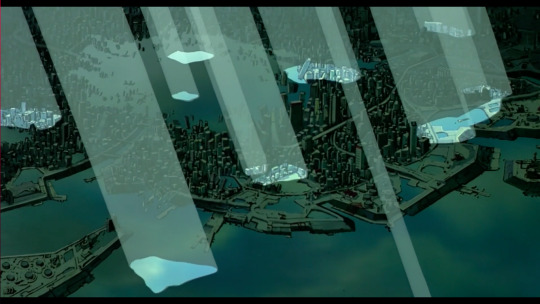
Just to name some cyberpunk films/animes I've seen include the two Tron movies, Minority Report, Akria, Psycho-Pass, Ghost in the Shell, and The Matrix. I haven't read any books yet but I intend to read a few (idk which ones to start with though) before I finish creating Nova Futurum. There are so many movies I'd love to see and so many books I have yet to read. I adore this genre so much.
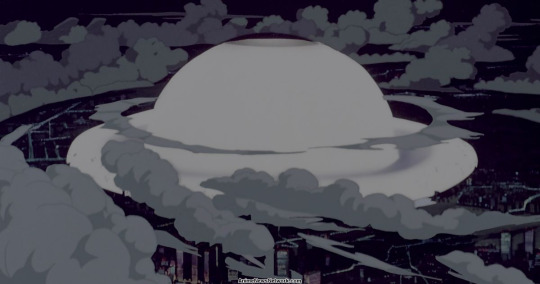
Most definitely I would say cyberpunk is a grim concept. What sells it to me as grim would be the "punk" factor of cyberpunk. Societies within this genre are often oppressed by powerful technology and have to find alternative ways to do what other societies would find easy or cheap.
Being grim definitely changes my mindset while writing within this genre. It gets darker and I delve into things like body modifications or implants or gmo food or stuff like that. I also tend to delve into controversial themes, like anti-government.
I would also consider cyberpunk to be a hopeful concept even through the grimness. Living in a harsh society is terrible and very grim and dark and etc, but humans are still living and surviving through it.
The dark rules and bleakness of the genre cannot tamper the hopefulness of the humans within it. To touch on Akira and its ending, everything was ruined. The fight touched and damaged nearly every element of the region. But still, the main character presses on. And we can see at the end him and his friends who have all somehow survived and will begin anew. And I love that. Humans will find a way to press on and expand beyond the tragedies that have happened to them.
So, tdlr: I consider cyberpunk to be very grim and for that element to be very very strong throughout the genre. but hopefulness is also a critical part of cyberpunk and only can happen thanks to the grim and bleakness.
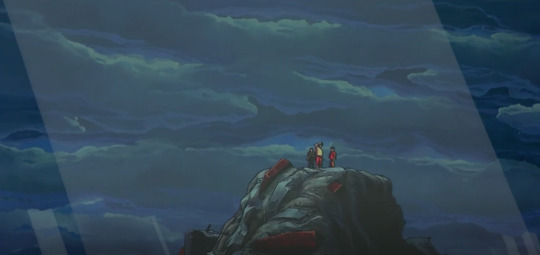
[all screenshots taken from akira]
---
Oops this got long-winded, sorry about that. I really appreciate the ask though! Cyberpunk things are just so fascinating and my hyperfixation and akjsdflkjsdf so fun. so thanks for asking and for reading this!!
5 notes
·
View notes
Text
Risky Business
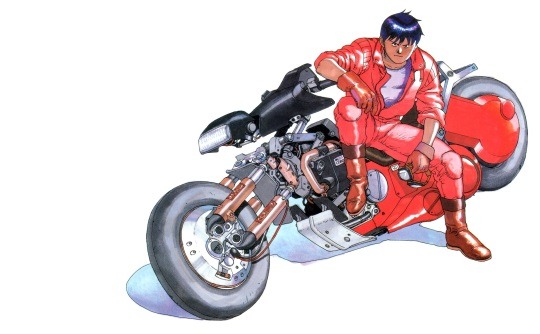
Buckle up, because this is going to be a long one. In my boundless dead time at my job because I am way too efficient at what I do, I came across an article about how Hollywood just doesn’t understand the popularity of anime and manga. Putting that sentiment through the capitalist filter of corporate Hollywood, it basically translates to US executives do not understand how to monetize the fervor anime has across the younger generations. For me, as a fan of the genre going on three and a half decades, it’s a no-brainer for me. Of course the Old Guard can’t wrap their heads around anime, they think it’s for “kids” because they see us, the Millennials and younger, as kids. Bro, I’m forty this year. I have friends with whole ass teenage children. We are not “kids”, just very nostalgia driven and the Zoomers are just now entering “real adult age.” I’m talking graduating from college, entering the workforce, and renting cars without a co-signer. We are not children. We are adults who are shaping, and have been shaping, pop culture for decades. Considering we, as Millennials, have raised our younger Zoomer siblings (or children in some cases), they grew up with anime and video games as a household mainstay, not some niche, geek, fetish to be enjoyed in the dark. Now ask yourself, how many mid-Forties movie executives are there in the industry? Now ask yourself how man mid-Sixties Execs there are? That’s your answer. Try selling the allure of, say, a proper, live action, Dragon Ball Z adaption to Bob Iger and he’ll scoff at the budget necessities. There’s no way something like Reincarnated as a Slime get made here, let alone the likes of the immediately controversial EVA with all of the biblical imagery. There’s no way you can adapt the vast amount of anime based strictly on the fact that the US was founded by closed minded prudes, and that sentimentality has carried over into present day Middle America.
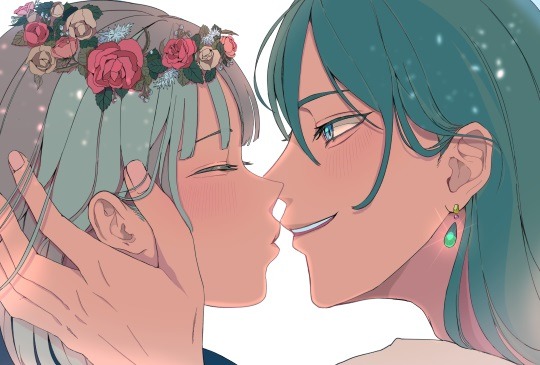
My beef with Conservatism has long been documented on this blog. I don’t understand why so many people in this country, look back with rose colored glasses on an America that was staunched in hate and cruelty. I mean, I do, they’re white, but still. It’s insane to think that, in this, the year of our lord, two thousand and twenty-four, that cats still get their dander in a froth over something as ridiculous as being a Furry, even though bugs bunny in a dress was a sexual trigger for just SO many of these Boomers growing up. Sh*t like that speaks volumes toward the repressed mentality of people in that age range, the people basically in charge of everything. They are set in their ways and refuse to accept anything new. I see a microcosm of that with my mom. I try to introduce her to anime I believe has merit and she just scoffs at it. Ghost in the Shell, Akira, Howl’s Moving Castle (even though I don’t like Ghibli films), and even Vampire Hunter D. She hated all of them. Refused to engage because they are cartoons. And that, right there, is the crux of the issue, I think: Boomers don’t see the difference between Mickey Mouse and Goku, it’s all just cartoons. On the surface level. For those who actually give anime a chance, they’re greeted with some of the most aggressively offensive content, to their very narrow, counter-culture, Reaganomics influenced, Televangelist inspired, senses.
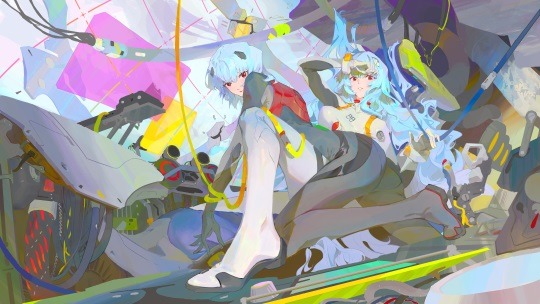
My favorite anime is Neon Genesis Evangelion. My favorite anime character is Rei Ayanami. Or Vegeta. They’re basically one-A and one-B for me at this point but, for the sake of this essay, I’m going Rei I. EVA is brilliant. It’s extremely well written, has fantastic world building, is f*cking GORGEOUS to look at, and deals with some pretty heavy sh*t. I’m talking borderline blasphemous, alternate biblical sh*t. How do you sell a fourteen year old, piloting a cyborg mech with the soul of his dead mom trapped inside it, punching through the Sefirot, in order to trigger the end of humanity so everyone can return to primordial goo, so his widowed father can reunite with said trapped mommy soul in eternal oblivion? How do you market that to a devoutly Mormon trad wife from Idaho or that stereotypical, god-fearing, coal mining husband from West Virginia? There’s no way, and that’s not counting the overtly homosexual (I guess?) Kowru or the hyper sexualized relationship between Shinji and Asuka, or the wildly inappropriate situationship between Gendo and Rei. This sh*t will not fly with US audiences., which brings me to the main reason why anime adaptions fail here: Americanization. The bane of any foreign adaption. Hollywood has this incessant need to change sh*t when adapting anything, which is fine to an extent, but when you butcher the spirit of the source material chasing after US sensibilities, why even adapt the sh*t? To this day, my mom thinks the original Godzilla is dog sh*t but that’s because she saw the version re-cut with Perry Mason. I showed her the original and, while she admitted it was much better than the one she saw as a kid, the damage was done. Tokusatsu was just goofy ass Japanese people., stomping on miniatures with fireworks popping off in the background. Godzilla came out in 1954. The Americanization of Japanese cinema has been poisoning entire audiences for at least that long. Guess who grew up watching those terrible f*cking adaptions? Guess who has a built-in bias because everything they saw coming out of Japan, was treated like goofy, campy, unserious, children’s fair? Guess who’s making the business decisions in adapting this sh*t going forward?

Ultimately, Hollywood can’t make anime adaptions because don’t understand anime. They don’t see the value in the source material outside the superficiality of the admittedly beautifully animated genre. No major studio is going to commit legitimate resources to any anime adaption because of the risk involved. In their minds. Look at Battle Angel Alita. That film was rather successful and stayed true to the overall source material. As an anime adaption, it’s one of the best. However, since it didn’t make a billion f*cking dollars, the studio has refused to revisit it at all. They’ve chocked that “failure” up to not connecting with audiences. No, it failed because you didn’t market it the way you should have. You didn’t believe in the franchise potential and basically just dropped the thing into the theater. Even so, Alita: Battle Angel made a profit and has garners a strong cult following which hasn’t stopped their calls for a sequel to this day. On the other end, you have the disastrous ScarJo Ghost in the Shell. There are a myriad of reasons why this thing sucks but it basically boils down to how lazy the adaption turned out. The original anime film is a staple of cyberpunk existentialism. None of that heady, deep, and challenging content is found in the remake. It’s just generic sci-fi identity thriller but pretty that usual. No substance, all flash. Now, that’s not to say there aren’t fantastic adaptions out there. Netflix has done a brilliant job, by comparison, in turning anime into live action. The Yu Yu Hakusho joint was decent. It felt culturally appropriate and didn’t squander the time they had with the characters. It was definitely on the cheaper side but that was Yu Yu, all day. I think the biggest issue people had was comparing it to the absolutely perfect One Piece outing which released just a few months earlier. That show, that take, was perfect. F*cking everything, down to the last, minute, detail. Brilliance, through and through. But it also cost Netflix a pretty penny. They took on the risk and reaped the well-deserved rewards.
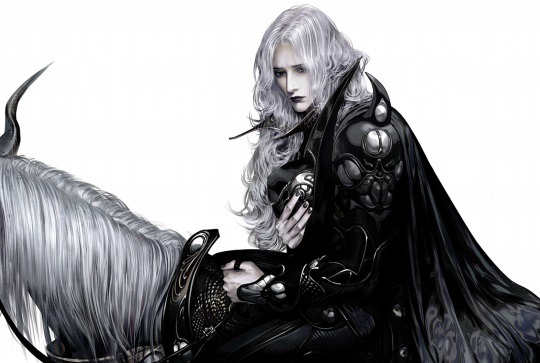
But, as much as they would like to be, Netflix ain’t Disney or WB Discovery or Paramount or any of the major studios. All three of them. They don’t have the cash to drop on a sweeping fantasy adaption of Berserk or high adrenaline, hyper stylized, run at Eyeshield 21. Do you see Disney putting in the necessary resources to make a strong adaption of One-Punch Man? How about Paramount letting Secret Base take a shot at something like Gundam? Wait, I think Netflix has it’s mitts on that already. Alright, we’ll go Macross instead. Imagine if someone gave Tim Burton enough loot to adapt f*cking Big O! How dope would that be? But it’ll never happen. Even though Pacific Rim did gangbusters and the Monsterverse proves there’s an audience for Mecha/Kaiju content, no one is going to drop the sheckles to make that stuff happen. Too much loot, too much risk, not enough appreciation for the source material. It sucks because there are so many US audience friendly franchises out there which are good, can be made on the cheap, and potentially thrive here. I already mentioned One-Pinch, but f*cking Slam Dunk is right there. Overlord can definitely scratch the current DnD itch Baldur's Gate 3 has set ablaze across the nation. Chobits is another one and I think City Hunter can do well here for adults. Appleseed is right there and, if you want to go niche but full of potential, AD police and Bubblegum Crisis. The Castlevania show all but paved the way for Vampire Hunter D to get the live action treatment. There are so many franchises out there ready for adaption, ready for the gamble, almost all of which will pay off. It just takes someone in the big chair to seriously believe in that content. Someone with the foresight to commit the necessary resources to really give these adaptions justice. Believe in what is there and respect the content. Follow those rules, and you will unlock a cash cow of brand new, monetizable, media to exploit. But stay away from Akira. That sh*t is a masterpiece and doesn’t need any grubby American Corpo fingers anywhere near it!
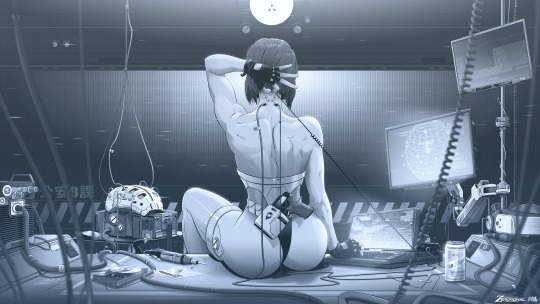
0 notes
Text
Risky Business

Buckle up, because this is going to be a long one. In my boundless dead time at my job because I am way too efficient at what I do, I came across an article about how Hollywood just doesn’t understand the popularity of anime and manga. Putting that sentiment through the capitalist filter of corporate Hollywood, it basically translates to US executives do not understand how to monetize the fervor anime has across the younger generations. For me, as a fan of the genre going on three and a half decades, it’s a no-brainer for me. Of course the Old Guard can’t wrap their heads around anime, they think it’s for “kids” because they see us, the Millennials and younger, as kids. Bro, I’m forty this year. I have friends with whole ass teenage children. We are not “kids”, just very nostalgia driven and the Zoomers are just now entering “real adult age.” I’m talking graduating from college, entering the workforce, and renting cars without a co-signer. We are not children. We are adults who are shaping, and have been shaping, pop culture for decades. Considering we, as Millennials, have raised our younger Zoomer siblings (or children in some cases), they grew up with anime and video games as a household mainstay, not some niche, geek, fetish to be enjoyed in the dark. Now ask yourself, how many mid-Forties movie executives are there in the industry? Now ask yourself how man mid-Sixties Execs there are? That’s your answer. Try selling the allure of, say, a proper, live action, Dragon Ball Z adaption to Bob Iger and he’ll scoff at the budget necessities. There’s no way something like Reincarnated as a Slime get made here, let alone the likes of the immediately controversial EVA with all of the biblical imagery. There’s no way you can adapt the vast amount of anime based strictly on the fact that the US was founded by closed minded prudes, and that sentimentality has carried over into present day Middle America.
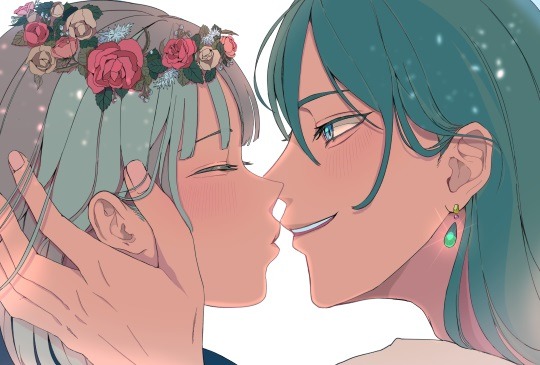
My beef with Conservatism has long been documented on this blog. I don’t understand why so many people in this country, look back with rose colored glasses on an America that was staunched in hate and cruelty. I mean, I do, they’re white, but still. It’s insane to think that, in this, the year of our lord, two thousand and twenty-four, that cats still get their dander in a froth over something as ridiculous as being a Furry, even though bugs bunny in a dress was a sexual trigger for just SO many of these Boomers growing up. Sh*t like that speaks volumes toward the repressed mentality of people in that age range, the people basically in charge of everything. They are set in their ways and refuse to accept anything new. I see a microcosm of that with my mom. I try to introduce her to anime I believe has merit and she just scoffs at it. Ghost in the Shell, Akira, Howl’s Moving Castle (even though I don’t like Ghibli films), and even Vampire Hunter D. She hated all of them. Refused to engage because they are cartoons. And that, right there, is the crux of the issue, I think: Boomers don’t see the difference between Mickey Mouse and Goku, it’s all just cartoons. On the surface level. For those who actually give anime a chance, they’re greeted with some of the most aggressively offensive content, to their very narrow, counter-culture, Reaganomics influenced, Televangelist inspired, senses.

My favorite anime is Neon Genesis Evangelion. My favorite anime character is Rei Ayanami. Or Vegeta. They’re basically one-A and one-B for me at this point but, for the sake of this essay, I’m going Rei I. EVA is brilliant. It’s extremely well written, has fantastic world building, is f*cking GORGEOUS to look at, and deals with some pretty heavy sh*t. I’m talking borderline blasphemous, alternate biblical sh*t. How do you sell a fourteen year old, piloting a cyborg mech with the soul of his dead mom trapped inside it, punching through the Sefirot, in order to trigger the end of humanity so everyone can return to primordial goo, so his widowed father can reunite with said trapped mommy soul in eternal oblivion? How do you market that to a devoutly Mormon trad wife from Idaho or that stereotypical, god-fearing, coal mining husband from West Virginia? There’s no way, and that’s not counting the overtly homosexual (I guess?) Kowru or the hyper sexualized relationship between Shinji and Asuka, or the wildly inappropriate situationship between Gendo and Rei. This sh*t will not fly with US audiences., which brings me to the main reason why anime adaptions fail here: Americanization. The bane of any foreign adaption. Hollywood has this incessant need to change sh*t when adapting anything, which is fine to an extent, but when you butcher the spirit of the source material chasing after US sensibilities, why even adapt the sh*t? To this day, my mom thinks the original Godzilla is dog sh*t but that’s because she saw the version re-cut with Perry Mason. I showed her the original and, while she admitted it was much better than the one she saw as a kid, the damage was done. Tokusatsu was just goofy ass Japanese people., stomping on miniatures with fireworks popping off in the background. Godzilla came out in 1954. The Americanization of Japanese cinema has been poisoning entire audiences for at least that long. Guess who grew up watching those terrible f*cking adaptions? Guess who has a built-in bias because everything they saw coming out of Japan, was treated like goofy, campy, unserious, children’s fair? Guess who’s making the business decisions in adapting this sh*t going forward?
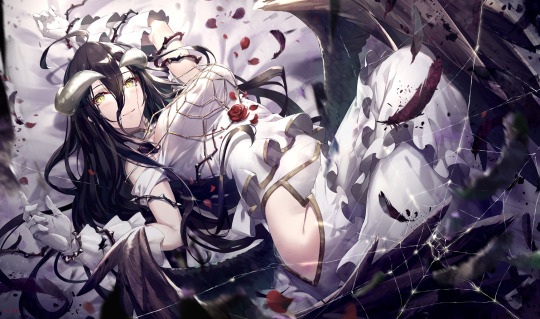
Ultimately, Hollywood can’t make anime adaptions because don’t understand anime. They don’t see the value in the source material outside the superficiality of the admittedly beautifully animated genre. No major studio is going to commit legitimate resources to any anime adaption because of the risk involved. In their minds. Look at Battle Angel Alita. That film was rather successful and stayed true to the overall source material. As an anime adaption, it’s one of the best. However, since it didn’t make a billion f*cking dollars, the studio has refused to revisit it at all. They’ve chocked that “failure” up to not connecting with audiences. No, it failed because you didn’t market it the way you should have. You didn’t believe in the franchise potential and basically just dropped the thing into the theater. Even so, Alita: Battle Angel made a profit and has garners a strong cult following which hasn’t stopped their calls for a sequel to this day. On the other end, you have the disastrous ScarJo Ghost in the Shell. There are a myriad of reasons why this thing sucks but it basically boils down to how lazy the adaption turned out. The original anime film is a staple of cyberpunk existentialism. None of that heady, deep, and challenging content is found in the remake. It’s just generic sci-fi identity thriller but pretty that usual. No substance, all flash. Now, that’s not to say there aren’t fantastic adaptions out there. Netflix has done a brilliant job, by comparison, in turning anime into live action. The Yu Yu Hakusho joint was decent. It felt culturally appropriate and didn’t squander the time they had with the characters. It was definitely on the cheaper side but that was Yu Yu, all day. I think the biggest issue people had was comparing it to the absolutely perfect One Piece outing which released just a few months earlier. That show, that take, was perfect. F*cking everything, down to the last, minute, detail. Brilliance, through and through. But it also cost Netflix a pretty penny. They took on the risk and reaped the well-deserved rewards.
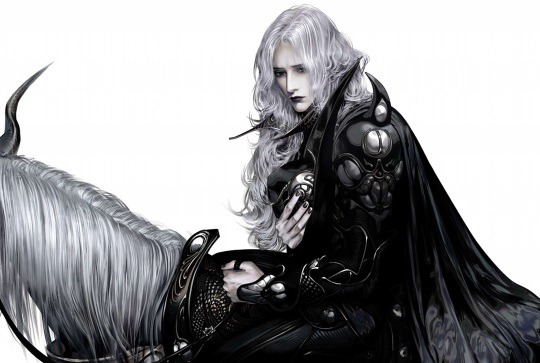
But, as much as they would like to be, Netflix ain’t Disney or WB Discovery or Paramount or any of the major studios. All three of them. They don’t have the cash to drop on a sweeping fantasy adaption of Berserk or high adrenaline, hyper stylized, run at Eyeshield 21. Do you see Disney putting in the necessary resources to make a strong adaption of One-Punch Man? How about Paramount letting Secret Base take a shot at something like Gundam? Wait, I think Netflix has it’s mitts on that already. Alright, we’ll go Macross instead. Imagine if someone gave Tim Burton enough loot to adapt f*cking Big O! How dope would that be? But it’ll never happen. Even though Pacific Rim did gangbusters and the Monsterverse proves there’s an audience for Mecha/Kaiju content, no one is going to drop the sheckles to make that stuff happen. Too much loot, too much risk, not enough appreciation for the source material. It sucks because there are so many US audience friendly franchises out there which are good, can be made on the cheap, and potentially thrive here. I already mentioned One-Pinch, but f*cking Slam Dunk is right there. Overlord can definitely scratch the current DnD itch Baldur's Gate 3 has set ablaze across the nation. Chobits is another one and I think City Hunter can do well here for adults. Appleseed is right there and, if you want to go niche but full of potential, AD police and Bubblegum Crisis. The Castlevania show all but paved the way for Vampire Hunter D to get the live action treatment. There are so many franchises out there ready for adaption, ready for the gamble, almost all of which will pay off. It just takes someone in the big chair to seriously believe in that content. Someone with the foresight to commit the necessary resources to really give these adaptions justice. Believe in what is there and respect the content. Follow those rules, and you will unlock a cash cow of brand new, monetizable, media to exploit. But stay away from Akira. That sh*t is a masterpiece and doesn’t need any grubby American Corpo fingers anywhere near it!
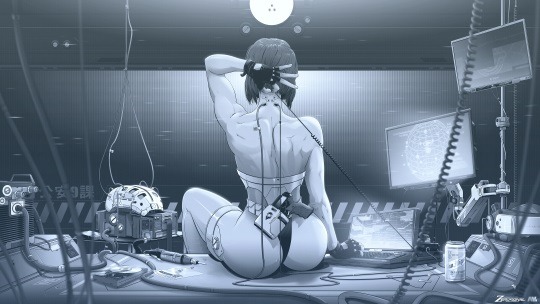
0 notes
Text
Pluto, an anime for our contemporary lives.
Remember when I talked about Ghost In The Shell and how it explored humanity in cyborgs? Ok, today we’re gonna talk about the same thing, but in full robots When I was a child I loved the movie “I, Robot”, which depicted the story about a human detective, played by Will Smith, who had to capture a robot who had broken the first rule of Asimov, which tells that no robot will ever harm a human. Today, I recently watched an anime that tells somewhat the same story, but this time the detective is also a robot.The anime is called “Pluto”. It’s a full reimagining of one of the stellar narrative arcs of the original Astroboy manga, from Osamu Tezuka. This readaptation is told by Naoki Urasawa, author of “Monster”, another manga based anime that I cherish and love. The anime adaptation is available in Netflix.So, in this story the detective is called Gesicht, and is one of the few super robots who exist in the world. These ultra advanced technobeings have a lot of cool abilities, but what makes them stand out from the rest of their “species”, as they are called in the story, is their ability to experience human emotions. Gesicht has a wife, he’s tired of his job and wants vacations. He has some nightmares time to time that don’t let him be at peace. He then encounters a case that may be one of the most controversial if it goes public: a series of murders, humans and robots alike, are being perpetrated by what seems to be a super robot. It then implies that they are as capable to lie and to destroy as their human counterpart. The story only gets more complex from there, but I gotta say it’s one of the most beatiful animes I’ve watched in some time. Some of my favorite scenes, spoilers aside, are from the really calm moments, like an old man recovering his love for his music, or two perople learning to mourn their loved ones (that scene made me cry, you’ll know it when you watch it).What’s more amazing to me is how it actualizes the Astroboy lore to our times, with clear references to the Middle Eastern War of the early 2000’s (I mean, there’s literally a Saddam Hussein-ish guy here jj). The politics are really important here, and it’s on the nose, even if it still frames it elegantly. But I would argue that what makes this story SO contemporary is how it speaks volumes about our actual paranoia in front of the ever growing AI. What happens if it in deed goes wild and gets bigger? So big, that it doesn’t need humanity anymore…What this anime responds to that, is that if that is ever the case, humanity will have to learn to understand its creation as a friend, as a neighbour, as a son… Because what only makes us human, is that we are a truly complex baggage of experiences, fears and hopes. And maybe, in the best of cases, the AI will get there with guidance, and love. If the love gets aside, the hate will grow in a cycle that never ends.Again, I don’t want to spoil any cool details, I just love how the Astroboy of this story is introduced and developed. I feel like this story could go on and on and on. But it doesn’t leave loose ends.So if you are looking for a fully developed story, with great characters and not only complex, but also truly important, contemporary phylosophical questions, I truly recommend you to watch Pluto, you won’t regret it.Now, back to my PS1 demake emulators jjj . .
Jorge Leiva
0 notes
Photo
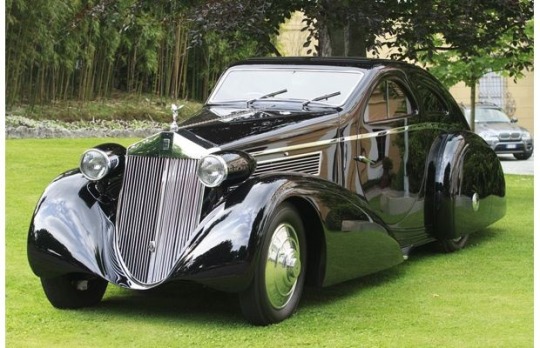

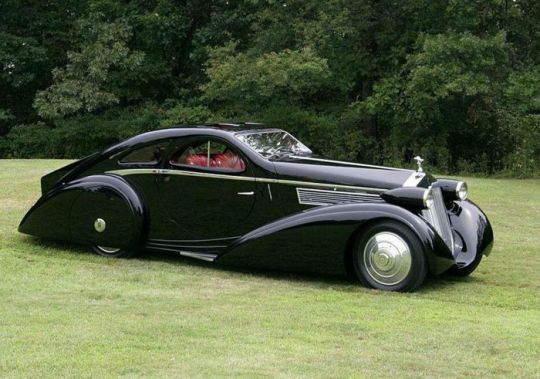

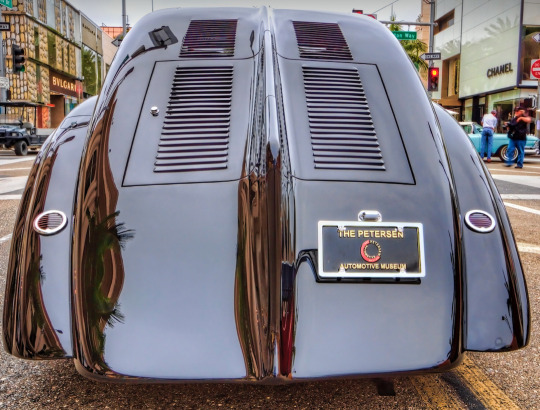
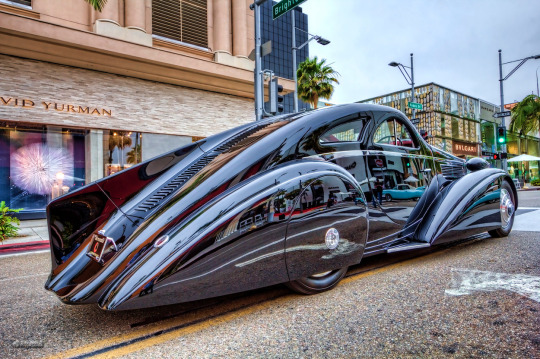



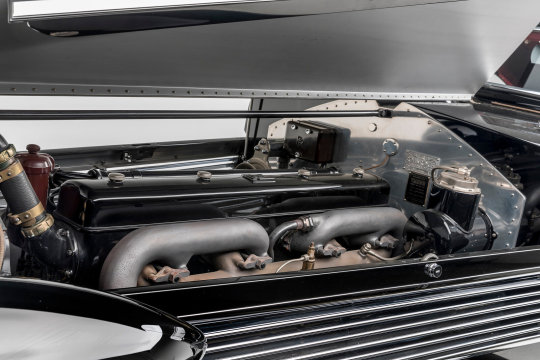
Rolls-Royce Phantom I Jonckheere Coupe
The first Rolls-Royce Phantom — then called the New Phantom, presently called the Phantom I — was introduced in 1925 in response to competition from European luxury marques like Hispano-Suiza and Isotta Fraschini and from premium American automakers like Packard and Pierce-Arrow. Based on the chassis of the outgoing 40/50 model, now known as the Silver Ghost, the Phantom introduced Rolls-Royce's first overhead valve engine and four-wheel brakes (although some sources say front brakes were introduced in late production Silver Ghosts). The OHV engine was taller than the sidevalve motor. That affected styling. The bodies coach built for the Phantom I had higher hoods, radiator shells and cowls.
In 1934, an as-yet-unidentified owner took the Phantom to the Jonckheere body company near Roeselare, Belgium to be rebodied. Though Henri Jonckheere built his first luxury automobile in 1902, the company had transitioned to making mostly bus and coach bodies by the 1930s. It still exists today as VDL Jonckheere.t’s not known who designed it, but Jonckheere built a radically different coupe body. Some say it was inspired by the aero designs of stylists Jacque Saoutchik and Joseph Figoni — but, to my eyes, it’s not nearly as elegant and flowing as their work. The squarish Rolls-Royce grill was retained, but it was sloped back to give the tall grill a more streamlined look. It is perhaps the only classic era Rolls-Royce whose grill is not vertical. To say the least, the car is a bit controversial with traditional Rolls-Royce enthusiasts. The windshield is also steeply raked. Bullet headlights and very long and flowing fenders continue the streamlined theme, but the car is so massive it’s hard for me to call it sleek. To finish off the aero look, Jonckheere put a big tailfin down the length of the middle of the trunk lid. Such fins were popular with European coachbuilders in the 1930s and you can see them on Bugattis, Delahayes and other custom-bodied cars of the era. Designer Raymond Loewy added one to his customized 1939 Lincoln Continental. Of course, the Rolls’ most distinctive features are its large rear-hinged round doors, which allow ingress for both front and rear passengers. Because of the odd door shape, the side windows are split vertically and open up like a scissors as they retract into the doors. Round fender skirts for the rear wheels echo the shape of the doors.
The car is almost 20-feet long and finished in dark black. It’s a big, almost ominous looking vehicle that would be at home in a Batman movie, driven by the villain. It’s not a very practical car. With ponderous weight and no power assist, the steering is difficult, particularly at low speed. The non-synchro transmission needs to be double clutched and, even though the car features Rolls-Royce’s servo-assisted mechanical brakes, the weight makes it hard to stop. The large turning radius, low ground clearance and extended rear end make maneuvering the vehicle difficult. The steeply sloping fastback roofline forces rear passengers to slouch. There is no back window to speak of, just louvers, so visibility isn’t the best. To make the most of the limited trunk space, there is a set of fitted luggage.
#Rolls-Royce Phantom I#Hispano-Suiza#Isotta Fraschini#Packard#Pierce-Arrow#Jonckheere#Lincoln Continental
254 notes
·
View notes
Text
One thing I wish the greater internet understood is how much free-time famous, working actors don’t have. Whenever something controversial - often to do with casting - comes up, many people are always quick to jump on the actors - not the producers, not the executive producers, not the studio heads, or even the casting director - for taking a role that they should ‘know better’ about. Haven’t they heard the rumours about this director, or that fellow actor? Don’t they know how important X role is t Y community? Don’t they know how problematic Z author is - or anything of that nature?
The answer is almost always ‘no, they don’t - why should they’? Filmmaking is a gruelling, exhausting business, and while the actors aren’t the first ones on the set and the last ones off, they do live in a weird and complicated bubble in which, most of the time, they have very little control over anything meaningful going on around them (this is why you get stories about actors being weird about trailer requirements or other shit - when so much of your life involves you submitting to everyone around you like the cinematographer, the director, the producer, the studio bigwigs, the PR people, your manager, your agent, your agent and manager’s bosses, and more - you try and find control where you get it). Filming is grueling, and it sucks the life out of you, and the actor is the one person who can’t half-ass their primary role: standing in front of the damn camera. They might put in a lousy performance, but they still have to show up and stand in front of everyone, being observed, critiqued, judged, dressed, undressed, pointed about, and recorded for hours. That doesn’t leave a lot of time for doing-deep dives down tumblr wormholes or finding every twitter thread about projects they might end up taking in the future And when you live your life in the tabloids eye, when you or any of your colleagues are constantly splashing across one lurid gossip story after another - you don’t tend to read a lot of news, either. It lies about your friends daily, so any one rumour doesn’t seem more or less credible than any other - after a while everything looks like the National Enquirer. You actually tend to read as little news as humanly possible - when you’ve got free time, you spend it away from the world, not try and shove yourself more into it. Yeah, they’ve got social media accounts - and they have people who run them, or work for great big social-media-running companies, and absolutely nobody there is going to tell them anything they don’t need to know from the perspective of client-facing public relationship management. So unless a celebrity has missed something that so completely dominated the headlines they can’t possibly have missed it - GLOBAL headlines, mind you, not, say, the US headlines while they were off filming two back-to-back action flicks in rural Romanian where the production company got such a good tax break - you, average person who spends too much time on Twitter or Tumblr, literally do know more about the problematic elements of thing X then they do. You have time and energy to learn it that they really, really don’t. And that’s not even to mention how tenuous work for all but a handful of actors really is, especially for female actors. So when it comes time to get angry about whitewashing, or a problematic story, or director, or anything, think about who you’re getting mad at - who actually bears the responsibility for the choices you’re pissed at. Because odds are it isn’t the famous star who gets paid to take the heat for this shit - it’s the much more nameless people whose names only show up in obscure trade magazines and glowing business reports that don’t make it to Tumblr’s attention - the people who make billions off the star’s millions and who have way more power than you seem to think movie stars have. I know we’re all still getting a lot of mileage about making Scarlett Johansson/Ghost in the Shell jokes - but the person who had the least amount of control in that situation was probably Johansson herself. No - she didn’t know a goddamn thing about GitS when she took the role, and no, she’s isn’t actually all that up on the history of whitewashing in Hollywood, and yes, she could have just ‘said no to the roll - but when you work in an industry that still treats any woman over 28 as essentially dead, and somebody offers you the starring roll in a big expensive action flick your agent tells you is hecking popular, and you’ve spent years as the only female character in a massively successful superhero franchise and all your co-workers are getting sequels to their own movies and your own movie is nowhere in sight and may never happen, and you’re thirty-three years old and despite the fact that you’re about to become the highest-paid actress in Hollywood you’re still not making what your mediocre male colleagues are making- YOU SAY YES TO THE JOB. And that goes quadruple for actors much farther down the chain of success than Scarlett Johansson. You take the gig because if you don’t there may never be another gig. So: you want to get pissed at who ends up in movies and what stories get told and by whom? Then get mad at the people who actively influence those decisions. You should get pissed at celebrities when they say dumb shit and do dumb things - but only when they’ve actually got any agency, and real agency at that, not the strange pseudo-agency that comes from surviving in the Hollywood bubble. It’s an unfair, unpleasant system, but the folks who built it, the folks who really profit by it, tend to wear forgettable suits, sit on boards of directors, and never appear on the cover of anything. You want Hollywood to tell better stories, stop whitewashing characters, and stop casting James Cordon in things? Then find the people who actually move the levers of power - direct your anger at Bob Iger, or John Stankey, or Tony Vinciquerra - the people who normally rake in the cash and never have to face your ire because you never cared to know who they were. Get mad at the suits, you guys. The suits are your enemies. The suits/
48 notes
·
View notes
Text
Reviewing My Anime 10/10's *Relatively* Spoiler-Free
Note: What I rank a 10/10 is very specific and obviously very subjective to my own. Something can only be a 10/10 if I already consider it a 9/10 AND I must have rewatched it. I am someone who typically does not rewatch/reread anything, unless it's something I truly absolutely enjoy. With that being said, because of the requirements, I only have 4 animes that I rank 10/10, and tbh only one of those animes would get that ranking from the general anime audience. The rest are SO SO SO specific to my particular tastes that I would be absolutely stunned if someone also had the same four as me, because the requirement is so specific. Imma make another post eventually for my 9/10's because I think that list makes a lot more sense for a general anime audience lmaooo.
Soooo, in order of least personal to most personal (although obviously they're all personal to me lol) we have:
1. Psycho-Pass
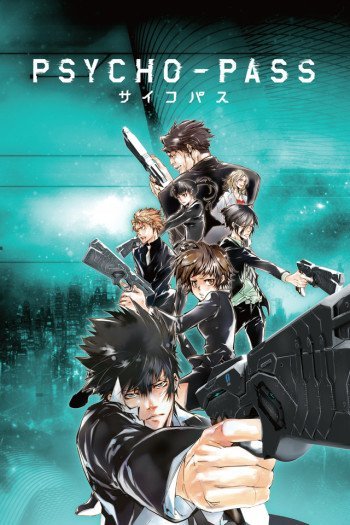
Recommended for people who: are really into that dark dystopian future society vibes, are fans of Ghost in the Shell, like detective/crime stories
Okay, for a few people, this one actually probably makes some sense. At the moment, it has an 8.37 on myanimelist which means this anime is super well liked. I've watched this anime twice, first the original and then the second time I watched the director's cut (yes that exists lol). Overall, I'm a huge fan of the entire Psycho-Pass anime series as a whole. I've watched all three seasons, as well as two of the movies. I didn't watch any of the Sinners of the System ones cuz tbh I literally couldn't find an english sub of that anywhere, it just doesn't exist lol. I think it's okay cuz the ratings for the Sinners of the System trio of movies seems meh. I've actually watched Psycho-Pass the Movie like three/four times LMAO but that's simply cuz a movie is obviously much quicker to watch than an entire anime season. Like just objectively, the Psycho Pass series as a whole is very inconsistent in quality due to the fact that it's all original, so they do technically just make up everything as they go lol. Season two is all right (I think it gets more hate than it should), three is good but season one by far is the absolute best in the entire series. I'd argue the movie is technically my absolute favorite out of the whole IP, but I actually give the movie an 8/10. The movie, because of being obviously way shorter, simply does not have the deep controversial and philosophical lines of thought that season one has. It lacks that extra depth that would make me put it anything higher than an 8. The two main characters have good chemistry as a crime-fighting duo and the main villain's rivalry/relationship with the male lead is super compelling. The female lead is meant to be relatively naive/more on the innocent side which works with the plot as it allows the show to naturally explain and give more exposition as to the actual world and rules of Psycho-Pass without having it seem so ham-fisted or just throwing info to the audience.
2. Violet Evergarden

Recommended for people who: cry to sad movies, like gorgeous animation, are very empathetic, like vignette-esque storytelling
All right if you even remotely consider yourself an avid anime fan, then this anime is probably also somewhere on your 10/10 list or at least an anime you consider to be "very good." That is, unless you are that very vocal minority who simply really just REALLY do not like this anime for some god forsaken reason. However, in my honest opinion, I think an anime like this just really doesn't sit well with ... how do I put this blunty ... people who do not give a fuck about other people or anyone else's feelings but their own. Basically, IF YOU ARE SELFISH, A NARCISSIST, EGOTISTICAL, OR ANY SORT OF COMBO OF THOSE THREE, YOU WILL NOT LIKE THIS ANIME. And if you do, you probably don't think you're any of those things. Because of the anime's very premise, I find it very difficult to see a very self-centered/heartless person particularly enjoying this anime. The whole premise of this anime is that the main character who, because of her upbringing, doesn't understand feelings/emotions, especially the concept of love, grows as a human and slowly begins to learn what love is. The show does this by showing multiple sets of characters meant to represent different types of love (romantic, familial, platonic, etc). The vocal minority of people I've seen give Violet Evergarden bad ratings all typically argue that although beautiful, the anime doesn't have any substance/doesn't really mean anything. If that's honestly all you got after watching the entire show, then you deadass just don't get it, and you probably will never ever get it. If you've seen or heard of Vivy: Fluorite Eye's Song, than just know that these two animes are VERY very similar in vibe despite being technically different genres. However, I personally found the themes and concepts in Vivy are done much more masterfully in Violet Evergarden which I think is due to Vivy's heavier focus on a story-driven overarching plot/action as opposed to Violet Evergarden's focus more on emotional impact/an episodic format. I've watched the entire series and I've rewatched the main show twice. TBH you can probably skip the gaiden movie AKA the one set at the girl's academy it was highkey pointless. Compared to the opera episode they added as a "special", the gaiden movie was still good but I wish resources were dedicated to something that actually added to the story. ALSO YES I KNOW ITS A GAIDEN AKA A SIDE STORY AKA FILLER SO YES NO DUH IT DIDNT ADD ANYTHING, BUT STILL. As for the main show, I think I cried for three episodes (the one about the playwright/author I forgot lol, the mother and daughter, and the soldier). On my rewatch, I didn't cry but I still deeply cared for and related to the characters. Violet Evergarden is a beautiful anime with a beautiful story.
3. ACCA: 13-ku Kansatsu Ka
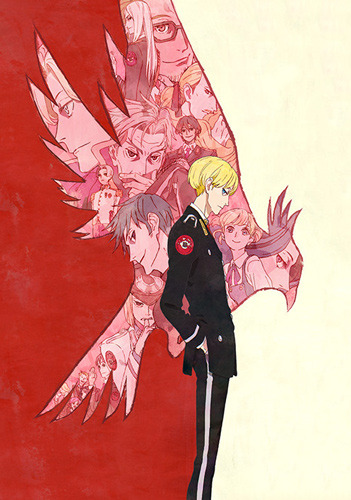
Recommended for people who: like bread and bakeries, don't mind a very chill and slow-paced story, like stories about political intrigue and hidden agendas
Based on a relatively short manga, ACCA: 13 follows the main character Jean Otus as he performs his job of auditing the 13 districts of his country Dowa, while rumors and politics brew in the background that threaten to entangle Jean into a complicated plot. To be honest, I think properly reviewing this anime is impossible for me, because I just can't really explain the vibes of this anime besides "chill" and "intriguing." I think trying to explain anything more than the basic premise I just wrote would spoil a lot of what ACCA is, because it's plot is actually relatively quite simple and straightforward. Compared to Psycho-Pass which has a relatively good cult following, and Violet Evergarden which is universally praised, ACCA is an anime that I've yet to personally meet anyone who has ever even heard of it LMAOO. And almost everyone I know watches anime, so that's saying something oof. ACCA is made by Madhouse, which if you don't know, is a super well known anime studio, producing big hits such as Death Note, Hunter x Hunter, One Punch Man, etc. That's why I'm surprised that ACCA has flown just SO under the radar, but that may be due to the overalls nature of the anime itself. ACCA is an anime where all the characters hold their card close and no one seems to really share their real thoughts. One main criticism the anime has is the lack of deeper connections to characters and that for a main character, Jean Otus is very bland. To be honest, I think that's a very fair criticism and I can understand why this would prevent people from rating this anime higher than an 8 or 7. Due to the very nature of the anime and its plot, I do agree that there is a huge cast of colorful characters that we unfortunately don't really get to know more about. To be honest though, I don't mind this because I feel that's honestly quite realistic, especially factoring in Jean's job. All these places he's going and all these people he's meeting, it's literally just his job. He's not on vacation, these people aren't his friends, so the anime has no real reason to dwell much longer on places past its specific episode. Just like in real life, you encounter so many people and go past so many places that you probably won't ever see again. So for me personally, I didn't mind that the anime didn't explicitly show much about the backstories or lives of the cast, save for the very main characters (as their backstories were plot relevant). I think as viewers of not simply an anime, but a whole other world, I think it should be satisfactory to inherently understand that these are whole "people" who have entire lives that we are not exactly privy to. So although admittedly our understanding of many of the characters was all around quite shallow, I think that works for the scope of the anime, which was relatively simple and focused on just Jean living his life and the political plot stirring in the background until it was brought forward in the second half of the anime. Also I love Jean Otus. I actually completely absolutely adore him. He is literally my profile pic for myanimelist LMAO. I think calling him "bland" is fair from other people's perspectives, especially as the supposed main character of an ANIME, but I feel that if ACCA was in a different format like a novel, I think his personality would have been less criticized. Like I said, I love him soo much. I don't find him bland at all, but actually very interesting and highkey attractive LOL (if only he'd quit smoking but it's part of his charm 😞). Yes for an anime "protagonist," he is quite underwhelming especially compared to others, but I think that makes him very charming!!! Like all he wants to do is just chill, vibe, and do his job lmaooo. I think as a person, he’s very charismatic, and in the world of ACCA the rest of the characters see that as well. Because like, if he really were such a bland person, why would so many people like him and actually trust him lol? As for why it’s technically my favorite anime of all time (my ultimate one is a movie), I can’t give super detailed reasons why to be honest. I just really like the overall vibes of the anime itself, and I think the anime is just super unique and original. I’ve watched a ton of anime over the years, but I’ve genuinely seen nothing like ACCA in the slightest. I mean, just look at the recommended animes on the myanimelist. The recommended animes are all stuff I’ve also personally really liked (like fugou keiji unlimited and the great pretender) but yeah there’s just truly nothing that’s close to what ACCA is, and because of that, it reminds my absolute favorite anime show. I’ve seen the dub and the sub, even though I am a vehement dub hater lmaooo (except for very few circumstances, and this also applies to all non-English media, not just anime). There was only one thing in the entire show that slightly confused me/ seemed slightly unbelievable and I won’t spoil but it had something to do with the overall timeline of some events, but it doesn’t detract from the story at all. Oh and the art style! I really love the art style of the anime. It stays pretty true to the manga, but is also just an overall kind of art style I really like. I really enjoy the more like 2d/flat/drawn art style versus really clean and really detailed stuff, and I’m typically not a big fan of very obvious use of CGI (unless done tastefully like in Demon Slayer). All the backgrounds in ACCA have this painted/drawn style and the anime itself has this like muted(?) filter over it that makes the anime seem like someone’s drawings just put up on display in a way that’s really refreshing and nice. I highly recommend this story for anyone who wants a breath of fresh air and to get away from the typical action-packed high energy of big name anime.
4. From Up on Poppy Hill

Imma make a whole separate post JUST for this movie so I can explain why I love this movie so so much. And honestly, Imma need a whole separate post in the first place to address the elephant in the room when it comes to this movie (if you’ve seen it, then you know what I’m talking about). And if you’ve haven’t seen the movie, maybe you’ve heard about one of its controversial themes. I’m not gonna say what it is, cuz I KNOW it’ll be super off-putting for a lot of people, but please omg just hear me out. I just love this movie so so much. I’ve seen it like 7 times and counting. I have it downloaded on my computer and on a flash drive. I’ve watched the sub AND the dub however I’ve stopped watching the dub because it makes me sad every time I hear Shun’s voice actor ;-; This movie is legit an honest-to-god comfort movie for me that I could watch over and over and I’ll fall in love with it again each and every time. And once again IMMA MAKE A WHOLE SEPARATE POST BECAUSE I SWEAR PEOPLE ARE GONNA BE LIKE “Yo ain’t this the movie with the -----” and it’s like PLEASE LET ME EXPLAIN. The vibes of this movie, the themes it addresses (yes even THAT theme), the music, the art, the characters, is perfectly presented in a way that I will never stop watching this movie. The only other film that has come close to the amount of times I’ve watched From Up on Poppy Hill would be Legally Blonde lmaooooo.
#anime#anime movie#from up on poppy hill#psycho pass#acca: 13-ku kansatsu ka#violet evergarden#anime review#myanimelist
20 notes
·
View notes
Text
BLOGTOBER 10/16/2020 pt 2: HOUSE OF WAX (2005)
I like this movie even more than I originally thought I did, although we shall see if I can justify this strange affection. When I first saw 2005's nominal remake of the 1953 HOUSE OF WAX, I experienced something that I object to in concept: guilty pleasure. I did not want to find myself seduced by one of these teen-targeting modern updates of canonical chillers of 50s and 60s, like THE HAUNTING and HOUSE ON HAUNTED HILL in 1999 and 13 GHOSTS in 2001. Indeed, the 2005 HOW is most commonly thought of as "the one with Paris Hilton?"--a thought that is hard to avoid, what with the movie’s mindless running gag about her then-recent sex tape. But, to my surprise, the very natural-acting It Girl of the 00s is not the worst thing about the movie, and moreover, there's a lot to like about the whole production.

Directed by Jaume Collet-Serra, now slated to direct DCU's forthcoming Black Adam movie (though I like him for ORPHAN), and written by former Doublemint twins (yes, really--and this fact will really become relevant) Chad and Carey Hayes, this HOUSE OF WAX is gory, loud, convoluted, and actually very likeable. A caravan of horny kids take a deadly detour down a bayou backroad that strands them in a seemingly abandoned town made up of eerie art deco buildings. Among them is the House of Wax, a wax museum in which literally every single thing is cast in wax--and so are all of its neighbors. Our heroes are trapped in this scenario with sinister mechanic Bo and disfigured maniac Vincent (*eye roll emoji*), whose means and motivation for turning an entire town into wax dummies are unclear, but you have to admit that they did a great job.

Unsurprisingly, HOUSE OF WAX is first and foremost an FX picture, and it fulfills that purpose with aplomb. One finds incredible commitment in the set design, which upholds its obligation to appear as a massive waxwork; even blunt objects like piano keys or marble tiles have that milky, semi-translucent appearance that leaves a visceral impression of their artificiality. The set may not count as a special effect exactly, but it is extremely special; its expressionistic flair filled me with the hope that it was a place I could visit, and I was inevitably disappointed to discover that it was a temporary construction in Australia’s Gold Coast, long since demolished. The violence is the main event, of course, and HOUSE hosts an exciting array of gory gags that I have rarely seen elsewhere, and that are better seen than described.

Lest anyone think of violence as a limited form of emotional exploitation, one of the things I like most about this remake is its use of horrific injuries to do something unusual in mainstream film. A character who has to wrench a crossbow bolt from his sternum vomits from the shock of it, conveying a physical reality that I can only immediately relate to Dan Hedaya getting smacked in the balls with a baseball bat in BLOOD SIMPLE. The main character survives the film with a severed finger, which is highly unusual; your average Hollywood production needs to restore order at the end of the story, and won't risk bumming out the audience with the thought of living with a permanent disfigurement. The few examples that come to mind are not necessarily mainstream visions, including DELIVERANCE and FROM BEYOND, in which disfigurement is used to communicate a grim ending for a trespassing character for whom there is no salvation. HOUSE OF WAX has no such philosophical pretentions, but its evocations of visceral revolt and permanent damage add an interesting touch of realism to an otherwise extremely cartoony movie.

Paris Hilton really is perfectly good here, although I suspect that one reason I like her is that I find her so relaxing to watch. One of Hilton’s signature characteristics, often interpreted as pure bimboism, is that she absolutely does not let anything get to her, ever--besides being terrorized by psychotic craftsmen, of course--a quality that she does not share with other celebrity “trainwrecks” of her general description.
We don't find this realism in the narrative component of HOW, which is loaded with extraneous and unresolved teen drama. However, the movie does do something that the superior original does not: It adds subtext. The Vincent Price version offers glimpses of class conflict, in which various characters struggle against poverty in their own way--whether it's through insurance fraud, exploitative art, or interpersonal gold digging--but it doesn't amount to much, prioritizing the pure terror of the situation. The 2005 remake actually engages directly with the idea of the uncanny duplicate. It is one of those unusual, often uncomfortable movies in which the main "couple" are siblings. Elisha Cuthbert plays the responsible twin sister of Chad Michael Murray, who has grown into a sullen juvenile delinquent due to their parents' clear preference for their daughter. Meanwhile, we discover that Bo and Vincent (Brian Van Holt for both) were conjoined twins whose mad scientist father performed a controversial separation, leaving one of them deformed; in an early scene from their horrific childhood, we find that their deranged parents also preferred the more controlled twin over his insane sibling. The parents were in the business of creating artificial impressions of life: the father a disgraced surgeon, the mother a maker of wax masks. All of these narratives describe the neurotic human urge to curate appearances, to synthesize normality or idealism through behavior, art, and medical intervention. Even Chad Michael Murray turns out to be a synthesis of his parents' idea of him, his JD façade forming a protective shell around an essentially good kid who has taken the fall for his slacker friends. One can only imagine how relevant this story is to its twin screenwriters; only in the most general conceptual sense, one hopes.

Don’t get me wrong: HOUSE OF WAX is definitely not brainfood. Most of its characters are little more than crash test dummies, its big reveal is hard to understand, and as with most remakes of vintage classics, its main reason for being is outrageous sadism and dazzling visual effects. And there’s nothing wrong with that. I'm not trying to tell you that HOUSE OF WAX is especially deep--or even that it makes very much sense--I do want to insist that it makes a noble attempt to address an interesting idea, which is more than many audiences have given it credit for.
#blogtober#2020#house of wax#1953#house of wax 1953#jaume collet-serra#chad hayes#carey hayes#elisha cuthbert#paris hilton#chad michael murray#brian van holt#horror#remake#twins#siblings#waxwork
56 notes
·
View notes
Note
I’m surprised it took so long for an article on the Artemis Fowl film to point out how the castings were controversial on the level of 2017 Ghost in the Shell having Scarlet Johannesson in the lead role. It took like a solid year and a half, and it was The Guardian.

I haven't really followed media around the Artemis Fowl movie last year. I only got stuff from social media and over here people have been pissed ever since casting got out (especially Butler, Holly and Root). Rightly so. And yes, Hollywood needs to stop with these questionable choices. Ghost in the Shell was an excellent example for really bad casting.
But please be careful with spoilers for a movie so shortly after the release. I haven't seen The Eternals yet and I'd appreciate it if you don't sent other spoilers. Thank you!
6 notes
·
View notes
Text
Top 34 Yuri Anime
From mid-February to mid-March Akiba held a poll asking viewers what their favorite anime series were. Over 50,000 votes were counted and in the end, they organized the 34 entries by votes to declare which series was the most popular. While not including every yuri series, these titles do vary wildly from pulse-pounding action to salacious dramas and subtext filled slice of life shows. Of course, the eternal problem with popularity polls is that they only show what is, well... popular. So I have decided to organize the same 34 series into my own list, based on a mixture person preference, influence, and historical importance to the genre. Note that this list is not exhaustive, as there are more than just these 34 Here we go!
34. Kuttsukiboshi – No surprise here. While impressive from a technical standpoint, as this two episode series was written, directed, and animated by one may, Nayoya Ishikawa, this impressive feat does nothing to sate the deep loathing I have for Kuttsukiboshi. I found it not only nonsensical but disgusting and offensive at almost every turn.
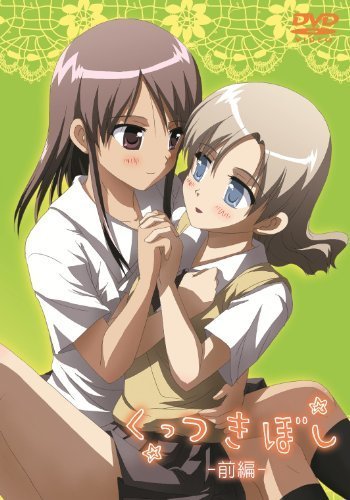
33. Maria Holic – Ok this one has some funny moments and a solid opening theme but mostly it is about a cross-dressing sadist abusing the hell out of one of the cringiest characters ever written.
32. Valkyrie Drive: Mermaid – ew
31. Seraphim Call – Certainly not the worst but age really took a toll on this anime. It is entirely lost to history, only obtaining 12 votes in the original poll.
30. Love To-LIE-Angle - FANTASTIC TITLE, gross series that was forgotten before it even finished
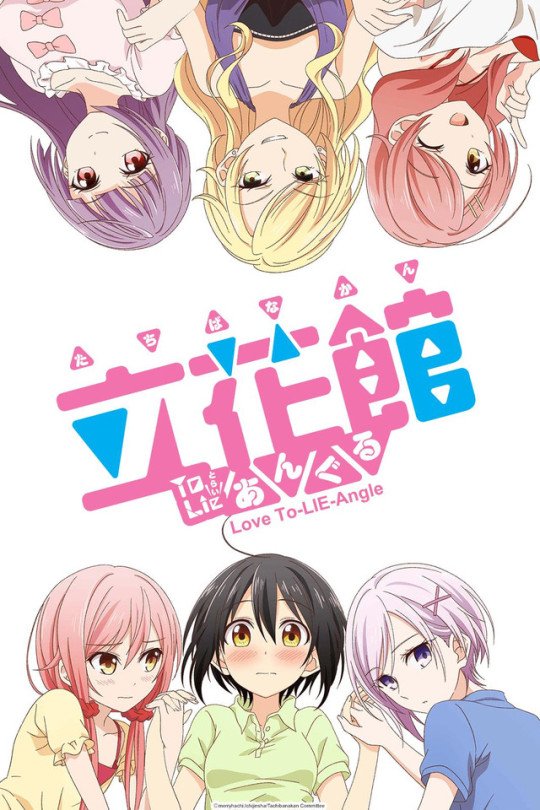
29. Kurau: Phantom Memory – whut
28. Hidamari Sketch – How did this below average series get as many anime adaptations as it did?
27. Candy Boy – 2007 - 2009 was weird. I actually like parts of this one, as it is really cute, but you have to turn your brain off because full out incest. I have not heard about this one since 2009 and that seems to be cool with everyone involved.
26. The Girl in Twilight – I had never heard of this before doing this piece, which says a lot about this anime’s cultural importance. But it is a good watch.

25. El Cazador de la Bruja – worth one good watch and that’s about it.
24. My-HiME – Raise your hand if you have heard of this one. That is what I thought, and yet it is #13 on the original list.
23. Pandora in the Crimson Shell: Ghost Urn – There is no real place to put this one and that says more about it than I ever could.
22. Blue Drop – Weird show, you should watch it, but not memorable
21. Simoun – This one is actually a sort of hidden gem but it is lost to history for most people.

20. Destiny of the Shrine Maiden – It baffles me how this mostly mediocre mecha series was so popular. That being said, the ending of episode 11 is some of my favorite directing ever.
19. Saki – Ya know, you never hear about this one but it is actually one of the most popular, and was #6 in the poll. It is basically a mahjong sports style anime so I have no idea how it is so popular but hey, lots of people swear by it. The ultimate you “love it or hate it” show for a lot of people strangely as well.
18. Netsuzou Trap -NTR – I held off as long as I could. While really popular I cannot stand this anime, my loathing of it is rivaled only by Kuttsukiboshi.
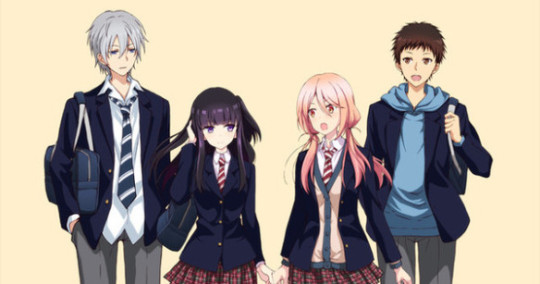
17. Sasameki Koto – A pretty well-known yuri series. The books are FAR better, but still an enjoyable watch beloved by many yuri fans.
16. Inugami-san to Nekoyama-san – It pains me to not be able to place this one higher, as it is one of my favorites and so hilarious, but overall there are other series that just deserve to be above it.
15. Konohana Kitan – Adorable, just adorable.
14. Black Rock Shooter – It's astonishing that an (admittedly awesome) character design can spawn multiple anime adaptations, a hit song, and its own franchise. The anime adaptation packs some good old-fashion emotional suffering and cool fights but nothing really beyond that.

13. Strike Witches – Far more popular and influential than it has any right to be. One of the most salacious shows on this list I always feel uncomfortable watching it but I do love the characters.
12. Yuri Kuma Arashi – The creators behind this were clearly not sober and probably could have used a cold shower for other reasons as well, but it is an INCREDIBLE anime with some of the best, although extraordinarily odd, writing.
11. Liz and the Blue Bird – Things are starting to get a bit difficult now, this one is actually hard to place. Being only a year old we are not sure of the impact it has but the movie is beautiful and stunning with some really bad pacing.
10. Sakura Trick – Full of fluffy fanservice, and pretty popular. This is one that almost every yuri fan will enjoy.

9. Maria Watches Over Us – The show that revived the sister-love story, a lot of the most popular yuri would not exist if not for this gentle diamond.
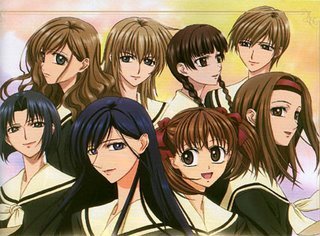
8. Yuruyuri – A yuri somehow becomes one of the best slice of life series of all time. Its fame is well deserved, as the memorable characters and dynamics can be enjoyed for many, many viewings.
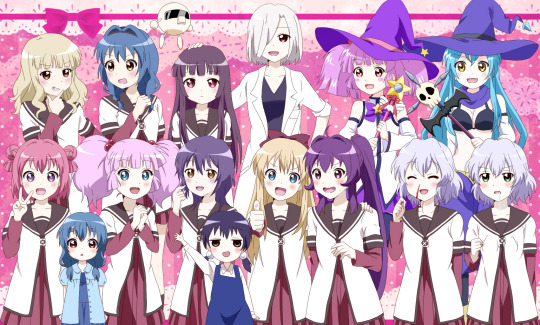
7. Bloom Into You – What started as a run of the mill yuri series became one of the most well-loved. One of the biggest anime of last year and a darn good yuri to boot. I wonder how we will look back on this one a decade later.
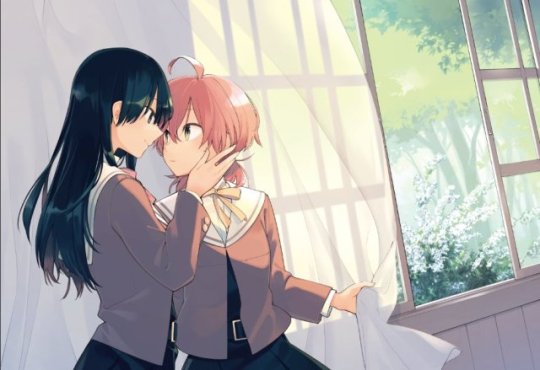
6. Citrus – DEAR GOD. I know how controversial this series is for many people and that some of you want to grab pitchforks right about now in response to me placing this high on the list but hear me out. Whatever your feelings about Citrus, and there is plenty of valid criticism to make, it is a very influential and popular anime. It scored the top spot on Akiba’s list by over 5000 votes. For me, it holds a special spot as the first real review I ever wrote (thank you, Erica, for the opportunity).
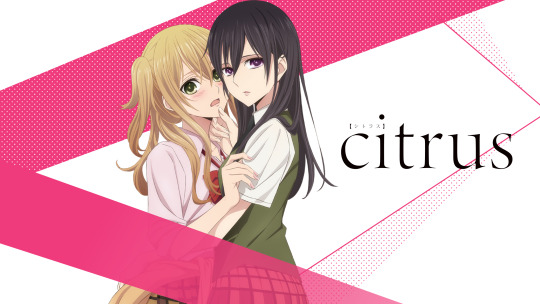
5. Sweet Blue Flowers – We are in the top five now, yet I still feel that I have placed this series far too low. It is one of the most grounded yuri series and ten years later its impact on the genre is still clear.
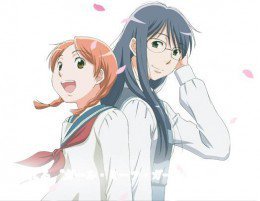
4. Strawberry Panic! – This was my first yuri and will always be special to me for this. But, there is no doubt that this series is actually worse than a lot of the ones lower than it on this list. I can almost feel the seething rage directed towards me for placing what can realistically be described as an aging, parodied, melodrama so high.Yet, as I gaze through my strawberry colored glasses, I see that Strawberry Panic has a magic to it. For so many in the American community, it holds a special place and I have heard my story with it reflected so often that I just started writing it on a speech bubble on the inside of the glasses I wear at conventions so that I know what people are saying to me when my mind wanders off. There is a reason it is nicknamed the gateway of yuri.

3. Kase-san and Morning Glories – A simply stunning, beautiful, and realistic story, this OVA movie is unlike any yuri before it. It holds nothing back in its yuri in its realistic depiction of a lesbian relationship. Kase-san is the best anime to come from twenty-gay-teen it just might change the genre forever.
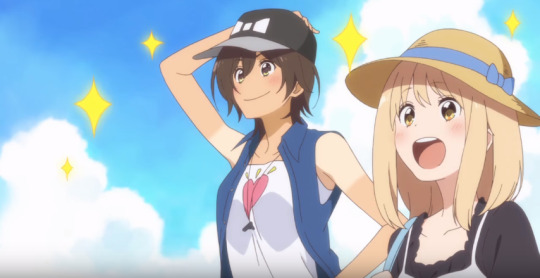
2. Puella Magi Madoka Magica – Speaking of changing a genre, PMMM, my favorite anime of all time, did something truly incredible. Not since sailor moon as such a social phenomenon sprung from a magical girl series. The perfect writing, postmodern use of tropes, philosophy, and just pure awe-inspiring nature of the show has not been forgotten years later. The legacy of such a widely celebrated series is nothing short of god-like.

1. Revolutionary Girl Utena – Was there ever really any doubt? This series defined what yuri is for a generation. It is one of the defining works of LGBT and feminist media and possibly one of the most important pieces to come out of 90′s anime. Yuri, as we know it may not exist, were it not for this legendary series.
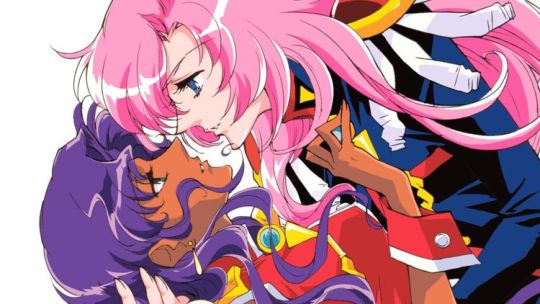
Well, that was fun but exhausting. Of course, this list is not perfect and I am sure that you more than disagree with me in a few places and I would love to hear them. Send me an ask, post a reply, tag me on twitter @HolyYuriMother for the love of the great yuri goddess! I want to know what you think, what series do you love? What anime do you hate? What nonsense thing did I say that just deserves to be torn apart? I want to know!
You can check out the original list on Akiba.
Help create yuri and LGBTQ+ news, reviews, and content by supporting YuriMother on Patreon
#yuri#anime#ranking#list#top 10#best#lgbt#lgbtq#lgbtq+#queer#gay#news#art#response#pmmm#madoka#citrus#bloom into you#kase san#girls#love#girls love#wlw#femslash
2K notes
·
View notes
Note
Hi, why don’t you like the new black widow movie coming out?
read up about scarlett’s controversies. she still supports sexual abusers in the director world (woody allen) and said just last year in about september or so that she would work with him any time.
she was about to take the role of playing a trans man but only stepped down because of backlash and supported her reasoning by saying “she should be able to play whatever she wants” there are REAL trans men out here. we hate to see white hollywood not give groups proper representation so why not actually get minorities to play minority roles?
remember the movie “ghost in the shell”? yeah- she white washed that too as it’s a live action remake of a famous JAPANESE film.
and I don’t wanna hear that it’s the casting directors issue and not hers, but as an actor/actress you’re supposed to have enough integrity and honor to say no to certain roles with shit like that which she clearly does not have.
it’s sad because i’m sure the movie will be good cinematically and it’s not fair to the other actors and actresses within it. but with her as the face i just won’t. like sure i write about natasha romanoff (which is actually kind of hard but i try to differentiate the actor from the character) but i just can’t get down with her.
there’s more in-depth articles online so if you’d like you can read up on those.
31 notes
·
View notes
Text
FEATURE: Wanna Feel Old? Here's 10 Anime That Turned 10 This Year!
Time flies when you're having fun, and in what seems like the blink of an eye a decade can come and go before you know it. At the time of this writing, the year 2010 was ten years ago. It was a great year for anime in many respects, but with the blazing speed with which new seasonal anime offerings pass through fandom's public consciousness, it can be difficult to realize that some of our favorite modern anime may now be considered “vintage” or “retro” by the younger fans.
Presented in alphabetical order, here's a short list of ten anime from the far-flung, formerly future year of 2010, compiled and curated with the express purpose of making you feel old.
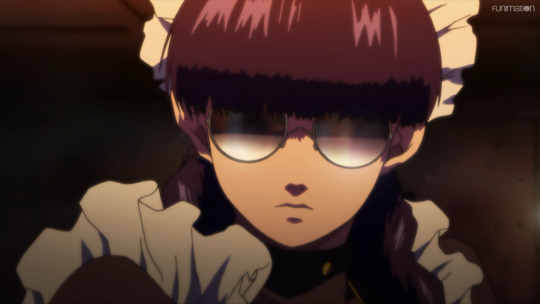
Image via Funimation
Black Lagoon: Roberta's Blood Trail
Aw, geez. It's really been a decade since we last got an animated version of the adventures of Rock, Revy, Dutch, Benny, and the rest of the criminals and crazies that populate the gritty city of Roanapur? Is Rei Hiroe ever going to finish the original manga? Is it still on hiatus? This set of OAVs was super dark, even by Black Lagoon standards. Maybe it's best to leave things well enough alone ...
Black Lagoon: Roberta's Blood Trail is distributed in the United States by Funimation.
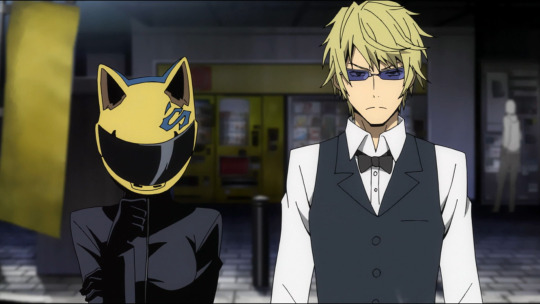
Durarara
My interest in this show dropped off when it began focusing more on the rivalries between Dollars and other gang organizations rather than the scythe-wielding, motorcycle-riding dullahan and the bouncer guy who's so angry that he can lob vending machines at people. But to realize Durarara is a decade old (and by extension, Baccano! is even older) makes me feel like that dude who withers up when he sips from the wrong Grail in Indiana Jones and The Last Crusade.

Occult Academy
A cool, original anime full of ghosts, psychics, aliens, time travel, and a protagonist with a sneering distaste for all of the paranormal nonsense she has to deal with on a daily basis, Occult Academy is now in the double-digits category in terms of age. It's a fun and smart little show, but realizing it's been around for a decade makes my bones ache.

Oreimo
A light novel adaptation with a rather specific interpretation of the phrase “keeping it in the family,” I never watched Oreimo, but I remember it being both extremely popular and extremely controversial when it was initially being streamed and broadcast. To think the flame wars this show ignited on internet message boards have now been burning for a decade or more ...

Image via Funimation
Panty & Stocking with Garterbelt
In the time since Panty & Stocking with Garterbelt premiered, most of the creative talent that put Gainax on the map has moved on to form their own studios (TRIGGER, Khara, etc.) and left that once-proud company as a shell of its former self, or two shells if you count Gaina (formerly Fukushima Gainax). After ten years, there's likely no longer any hope for a sequel, but I still love the rude, crude, and lewd adventures of this pair of fallen angels. I even love the notoriously trollish ending.
Panty & Stocking with Garter Belt is distributed in the United States by Funimation.
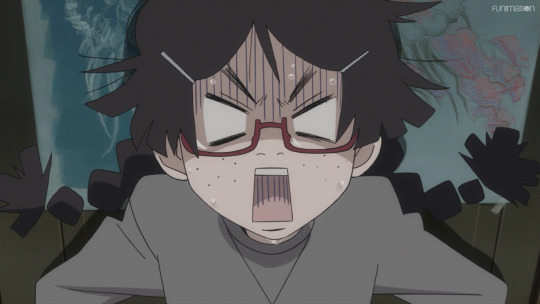
Image via Funimation
Princess Jellyfish
I love Princess Jellyfish to death, but the thought of the Sisterhood trapped in a full decade of awkwardness and isolation thanks to their poor social skills and weird hobbies is a terrifying one indeed. Will any of them ever get a real job? Will Tsukimi find happiness despite her romantic struggles? I really ought to finish the manga to find out ...
Princess Jellyfish is distributed in the United States by Funimation.
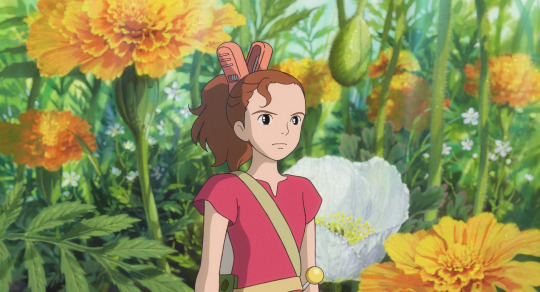
Image courtesy of GKIDS © 2010 Studio Ghibli - NDHDMTW
The Secret World of Arrietty
Wait a minute, I saw this in the theater during its first international run. That was back when Disney was still releasing Studio Ghibli's catalog, not GKIDS. Do movie theaters even exist any more? How many more films have they released since then? Does anyone remember The Secret World of Arrietty as a perfectly decent, non-Miyazaki, non-Takata Ghibli film?
The Secret World of Arrietty is distributed in the United States by GKIDS.
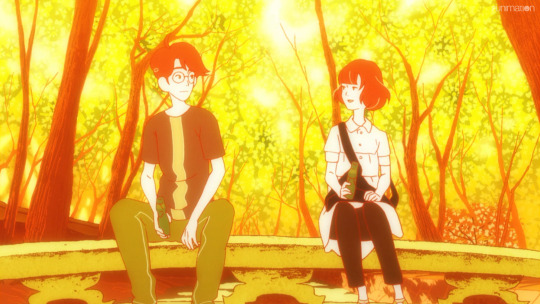
Image via Funimation
The Tatami Galaxy
Unlike some other entries in this list, The Tatami Galaxy has managed several spin-offs and sequels in the ten years since Tomihiko Morimi's novel was adapted into an anime by Masaaki Yuasa and MADHOUSE. A show that can be enjoyed on its own or as a complement to The Night is Short, Walk on Girl — The Tatami Galaxy is still great fun, even if you have to imagine that after a decade or more, the main character and the Raven-Haired Girl have probably each long-since graduated from college and may well be on their second or third divorce.
The Tatami Galaxy is distributed in the United States by Funimation.

Image via Hulu
Trigun: Badlands Rumble
Hey, remember how you loved watching Trigun on Adult Swim back in the day? That was in 2003. The original Japanese broadcast was in 1998. Trigun: Badlands Rumble, the most recent animated version of Trigun, was released in 2010. That was a decade ago. I am old. You are old. We're all old. Even the young ones among us are old ...
Trigun: Badlands Rumble is distributed in the United States by Funimation.
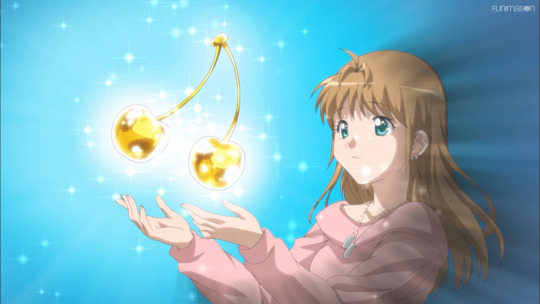
Image via Funimation
Yamada's First Time: B Gata H Kei
After a decade of effort, I wonder how well Yamada is doing in her quest to seduce 100 handsome members of the opposite sex? Judging by her level of success in the 2010 TV anime, she's probably still working on the first vertical line in that particular tally.
Yamada's First Time: B Gata H Kei is distributed in the United States by Funimation.
And there you have it, a nowhere near exhaustive list of 10-year-old anime to make you feel old. 2010 was a big year, and other honorable mentions include titles like Gintama: The Movie, Sound of the Sky, and Mobile Suit Gundam Unicorn, all of which are now old-school, whether we want them to be or not.
Which titles from the year 2010 make you feel the existential horror of hearing the music you listened to in high school being played on the “classic rock” station? Let us know in the comments section below, and always remember to acknowledge the follies of youth.

Paul Chapman is the host of The Greatest Movie EVER! Podcast and GME! Anime Fun Time.
Do you love writing? Do you love anime? If you have an idea for a features story, pitch it to Crunchyroll Features!
3 notes
·
View notes
Video
youtube
Trailer Time: Ghost in the Shell Trailer #2 (2017) *Or Possibly the Whole Film in 2:30* The second full trailer for next month's Ghost in the Shell is out, and-as someone who has little to no history with the anime series it's based on-I feel like it's intriguing and visually stunning.
#Anime#Ghost in the Shell#Ghost in the Shell Movie#Ghost in the Shell Movie Controversy#Ghost in the Shell Release Date#Ghost in the Shell Scarlett Johansson Casting Controversy#Ghost in the Shell Trailer#Juliette Binoche#Major Moto Kusanagi#movie trailers#movies#Rila Fukushima#Rupert Sanders#Scarlett Johansson
0 notes
Link
The high-profile remake, with an all-Asian cast, a PG-13 rating and a politically-charged star, was always going to pose major risks. Then the coronavirus upended its entire release plan.
Liu Yifei, star of Disney's live-action remake of Mulan, lives in Beijing, but she is originally from Wuhan, epicenter of the coronavirus. In January, the 32-year-old actress left China for Los Angeles to begin press for the film, weeks before the virus' outbreak, which has now infected more than 77,000 people, killed more than 2,500 and wreaked havoc in her home country. She says she doesn't have any family or close friends personally affected by the disease — she left Wuhan when she was 10 — but the epidemic has added an impossible-to-foresee variable to her film's March 27 worldwide release.
Liu pauses when asked about the outbreak. "It's really heavy for me to even think about it," she says. "People are doing the right thing. They are being careful for themselves and others. I'm so touched actually to see how they haven't been out for weeks. I'm really hoping for a miracle and that this will just be over soon."
In China, Liu is a household name, nicknamed "Fairy Sister" for her elegance and beauty. Modeling since age 8, she broke out in the 2003 Chinese TV series Demi-Gods and Semi-Devils, a commercial hit in China and the highest-rated Chinese drama in Taiwan at the time, and hasn't stopped working in film and TV since, earning fashion partnerships with Adidas, Shiseido and Armani along the way.
Disney and director Niki Caro selected Liu from more than 1,000 aspirants from around the world to star as Hua Mulan, the Chinese heroine who disguises herself as a man to fight in the Imperial Army in a film carefully designed to appeal to Western and Chinese audiences alike. But now there's a question of when Mulan will be released in China. With the coronavirus shutting down all 70,000 of the country's theaters since Jan. 24, it's unclear — and more unlikely every day — that multiplexes will reopen in time for its planned release. (Several high-profile U.S. films, including Universal's Dolittle and 1917 and Searchlight's Jojo Rabbit, saw their February releases scrapped.) "It certainly has worldwide and global appeal, but there's no denying that this is a very important film for the Chinese market," says Comscore analyst Paul Dergarabedian. "It's a huge blow for Disney if it doesn't release in China." Disney president of production Sean Bailey says he's "looking at it day by day."
Of course, this puts added pressure on the $200 million budgeted film — the priciest of Disney's recent live-action remakes — to perform in the U.S. and the rest of the world. Liu, who is enveloped in her own storm of controversy based on a political social media post about the Hong Kong protests, says she is trying hard not to think about all that. "It would really be a loss for me if I let the pressure overtake my possibilities," says the actress, who learned English when she lived in New York as a child for four years with her mother, a dancer, after her parents' divorce.
Even before the outbreak of the virus, Mulan — the first Disney-branded film with an all-Asian cast and the first to be rated PG-13 (for battle scenes) — would have marked one of the studio's riskiest live-action films to date. While the original 1998 Mulan was a critical and commercial hit, garnering a Golden Globe and Oscar nomination and grossing more than $300 million worldwide ($475 million today), it faltered at the Chinese box office. Part of the reason is that the Chinese government stalled its premiere for nearly a year because of lingering anger over Disney's 1997 release of Kundun, Martin Scorsese's Dalai Lama movie that dealt with China's occupation of Tibet. By the time Mulan reached theaters in late February 1999, most children had returned to school after the Chinese New Year holiday and pirated copies were widely available. For the new film, the plan was to counter piracy by releasing the movie in China the same day as the rest of the world, a strategy that's no longer possible.
The film also has tested the ability and tolerance of Disney — which aims to be ideologically neutral — in managing global political fallout. In August, Liu stirred up a major controversy when she reposted a pro-police comment on Chinese platform Weibo (where she has more than 66 million followers) at the height of the violence in Hong Kong. Her action was seen by critics of the Chinese government as supporting police brutality; soon after, the hashtag #BoycottMulan started trending on Twitter. Liu, who has American co-citizenship from her time in the U.S., was harshly criticized around the world for supporting oppression.
"I think it's obviously a very complicated situation and I'm not an expert," she says now, cautious in the extreme. "I just really hope this gets resolved soon." When pressed, Liu, whose answer seemed rehearsed, declines to say much more, simply repeating, "I think it's just a very sensitive situation." (Bailey also deflects when asked: "Yifei's politics are her own, and we are just focused on the movie and her performance.")
"Most Chinese celebrities choose to avoid posting such political statements because of the risks to their careers internationally," says Dorothy Lau, a professor at the Academy of Film, Hong Kong Baptist University. But though Liu's post drew criticism globally, some experts believe the political drama could actually result in more support for the film in China. "At the time, the government came out in various publications supporting the film very strongly," says USC professor Stanley Rosen, who specializes in Chinese politics and society. "There's a real impetus on the part of the Chinese government to make this work. I'm sure the government is going to try to show that the boycott has had no effect." And while her comment might still anger filmgoers in Hong Kong, where the recent live-action Aladdin took in $8 million, that market is tiny compared to the mainland (total 2019 Hong Kong box office was $245 million compared with China's $9.2 billion). "Most people outside Hong Kong have likely forgotten about this controversy," says Rosen. "But the Chinese government does not forget these things."
The fact that this version of Mulan is a large-scale war epic inspired more by the ancient Chinese ballad than the original animated film may also help win fans in Beijing, but the choice carries its own significant risks: The film needs to satisfy Chinese audiences raised on the legend while not disappointing a generation of fans in Asia (and elsewhere) for whom the animated film is foundational. "People would come in to audition and would say, 'Sorry, I know this is really unprofessional, but before I start, I just want you to know, the animated movie was the first time I saw someone that looked like me speak English in a movie theater,' " says producer Jason Reed. "The stakes couldn't be higher."
Mulan also represents a leap of faith in the film's director, Caro, whose previous two films boasted budgets of about 10 percent of Mulan's (The Zookeeper's Wife and Disney's 2015 sports drama McFarland USA were each in the $20 million to $25 million range). Caro, 53, was not Disney's first choice. Before hiring the New Zealand filmmaker, the studio targeted directors of Asian descent, including Taiwanese Oscar winner Ang Lee (he was busy promoting Billy Lynn's Long Halftime Walk) and Chinese helmer Jiang Wen. Still, Caro showcased a knack for representing cultures outside of her own with her 2002 debut Whale Rider, which follows a young Maori girl who wants to become chief, a role traditionally reserved for men.
The feminist story of Mulan resonated deeply with Caro. "When I first started wanting to be a filmmaker, there was so little precedent for women doing this [big studio] work," she says. She has now directed the most expensive live-action film by a woman, joining only a handful (Kathryn Bigelow, Ava DuVernay and Patty Jenkins) who have helmed films costing more than $100 million. "Patty changed the game with Wonder Woman. It was like a shot of adrenaline for me as a filmmaker," says Caro, who assembled a mostly female-led crew, including cinematographer Mandy Walker, costume designer Bina Daigeler, makeup designer Denise Kum and first assistant director Liz Tan.
To those still upset that an Asian filmmaker didn't get the job, Caro responds: "Although it's a critically important Chinese story and it's set in Chinese culture and history, there is another culture at play here, which is the culture of Disney, and that the director, whoever they were, needed to be able to handle both — and here I am."
Soon after Caro's hiring, rumors about the movie began to swirl online. Years of studios centering Asian movies around white protagonists (from Scarlett Johansson's Ghost in the Shell to Matt Damon's The Great Wall) meant the threat of whitewashing loomed large. An early report online claimed that the first draft, penned by Elizabeth Martin and Lauren Hynek, featured a white male protagonist.
"This is the first time I've been on a big touchstone movie with the internet what it is today. And I had a Google alert set, so I'd see these things, 'Oh, there was originally a white male lead, or they're casting Jennifer Lawrence,' and they were all just made up," says Reed, who adds that there may have been two non-Chinese characters in the initial script, but both were secondary roles.
The rumors may have been unfounded, but the fallout was real: The Lawrence-as-Mulan story sparked a 2016 petition, "Tell Disney You Don't Want a Whitewashed Mulan!" drawing more than 110,000 signatures.
Ironically, as that rumor swirled, Caro struggled to find an actress to play Mulan. The global hunt began in October 2016, when Caro sent a team of casting directors to each continent and virtually every small village in China. They were looking for an actress who could play Mulan across three phases, from a young woman unsure of her place to a soldier masquerading as a man and, finally, as an empowered warrior. She had to be fluent in English, handle the physical demands of martial arts and deliver the more emotional moments with Mulan's family. "She's a needle in a haystack, but we were going to find her," says Caro. "It's impossible to make this movie without this person."
Though the studio cast a wide multinational net, Bill Kong — a veteran Chinese producer known for Crouching Tiger, Hidden Dragon and Monster Hunt who was brought on as a producer on Mulan — advised Caro that in order for this film to play well in China, not just anyone of Asian descent would work. "The first thing I told her was, 'Hire a Chinese girl. You can't hire a Japanese girl to do this,' " he says.
Actresses who made it past that initial audition were brought to Los Angeles, but, after vetting several promising candidates for months, Caro decided to start over. (The search dragged on for so long that Disney delayed the original November 2018 release date.) Eventually, Liu, who had been unavailable during the first pass because of a TV show in China, was able to audition.
"I was determined that whoever played Mulan was not going to be fragile and feminine," says Caro. "She had to pass as a man in a man's army." So the director and a trainer put Liu through a 90-minute physical assessment, with extreme cardio and weight exercises. Other actresses fared less well. "Boy, did they flame out," says Caro with a laugh. But Liu "never complained once, never said, 'I can't.' She went to her limits."
With Liu, Disney also found an actress who could speak English, was familiar with martial arts from her TV work in China and, most importantly, was known to the Chinese market.
While Liu spent three months training for the role in New Zealand, Caro finished up her own extensive research. She took multiple trips to China and spoke to dozens of experts — including the world's foremost specialist on Tang dynasty military strategy. She also studied the 360-word Chinese poem The Ballad of Mulan, which first told the young heroine's story. The legend, which originated in the fifth or sixth century CE, is a tale as familiar in China as the story of Joan of Arc or Paul Bunyan in the West, and it's been adapted many times into plays, operas and films.
"I certainly wasn't aware of how deeply important it is to Mainland Chinese — all children are taught it," says Caro. "She is so meaningful that many places I went, people would say, 'Well, she comes from my village.' It was wonderful to feel that profound connection — but also terrifying."
As soon as the first trailers rolled out, so did the grumblings about factual inaccuracy, like the choice to situate Mulan's family in a tulou, a traditional round structure that housed several clans. These homes were mostly present in southern China, in what is now Fujian province (Mulan is said to be from the north), and would not have existed at the time she lived.
"I told [Caro] to not be too concerned about the historical accuracy," says Kong. "Mulan, though very famous, is fictional. She's not a historical person."
Disney tested the film thoroughly with Chinese audiences, including its own local executives. In an early version, Mulan kissed love interest Chen Honghui (Yoson An) on a bridge when they were about to part. "It was very beautiful, but the China office went, 'No, you can't, that doesn't feel right to the Chinese people,' " says Caro. "So we took it out."
Caro and the writers, Amanda Silver and Rick Jaffa (the husband-and-wife team behind Rise of the Planet of the Apes and Jurassic World who rewrote the original script), also had to consider the passionate fans of the 1998 film. Most Disney remakes, like Beauty and the Beast, Aladdin and The Lion King, have remained loyal to the tone and structure of the animated source material while adding a new song or character. Departing from that formula wasn't a swift decision. "We had a lot of conversations about it," says Reed. Ultimately they wanted "to tell this story in a way that is more real, more relatable, where we don't have the benefit of the joke to hide behind things that might be uncomfortable and we don't break into song to tell us the subtext."
They swapped the musical numbers and funny animal sidekicks for a large-scale war epic in which Mulan takes her father's place in the Imperial Army. "It's a woman's story that has been told for centuries but never by women, and we felt like it was really time to tell that story," says Silver. The question is whether Generation Z and millennials, who fell in love with these animated tales as kids and helped boost Aladdin to its $1 billion global haul, will embrace the direction. "To be honest, we really go by our gut and what creatively excites the team here," says Bailey. "I think it shows that there can be different approaches to these [movies] that have validity."
When word leaked that Mushu, the silly dragon sidekick (originally voiced by Eddie Murphy), would not be included, some fans expressed disappointment on social media. But the character's disappearance makes sense in the Chinese context. "Mushu was very popular in the U.S., but the Chinese hated it," says Rosen. "This kind of miniature dragon trivialized their culture."
Unlike its Marvel-branded films, Disney live-action movies must appeal to significantly younger audiences. Yet Caro wanted to make a real war movie. "You have to deliver on the war of it," she says, "and how do you do that under the Disney brand where you can't show any violence, gratuitous or otherwise?" She took advantage of the film's stunning locations, like setting a battle sequence in a geothermal valley, where steam could mask the fighting. "Those sequences, I'm proud of them. They're really beautiful and epic — but you can still take kids. No blood is shed. It's not Game of Thrones."
Disney's past live-action performance in China is a mixed bag. Both The Lion King ($120.5 million there) and Jungle Book ($148 million) enjoyed strong showings. Aladdin earned only $53 million, while 2017's Beauty and the Beast took in just $84 million (though it earned $1.3 billion worldwide).
Of course, the expectations for Mulan in China are much higher. "They will eventually release it in China," Dergarabedian notes. "It's just a matter of when and what effect that might have." Some analysts forecast that the film could match the success of the Kung Fu Panda series. The third movie, released in 2016, earned north of $144.2 million and became the country's biggest animated film ever. It was praised for being a Hollywood film that understood and showed respect toward the Chinese culture. Panda, however, had the advantage of being a Chinese co-production, which guarantees a larger share of the market — an advantage Mulan doesn't have.
Caro thinks about the film's fate there in more than simply financial terms. "Of course it's vitally important that it succeeds in China," she says, "because it belongs to China."
16 notes
·
View notes